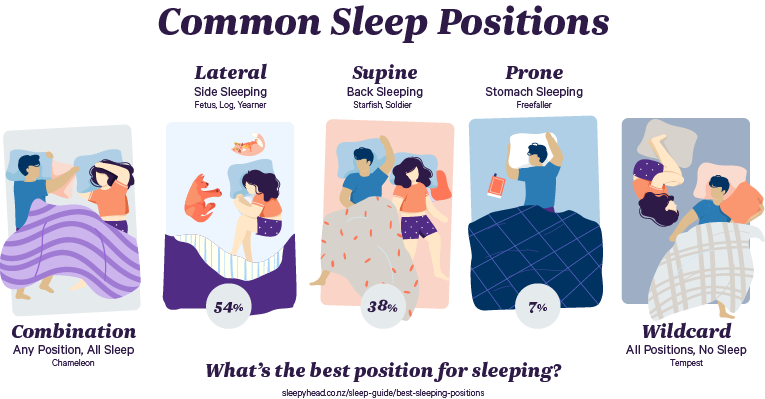Our collections
Introduction
Spring mattresses have evolved significantly since their invention in 1871, leading to
the current pocket spring, one of the most popular mattress technologies you’ll find
today.
In this FAQ we answer common questions about pocket springs, and how to choose
the one that’s right for you.
- How pocket spring mattresses work
- The benefits of pocket spring mattresses
- Are pocket spring mattresses compatible with slat bases?
- Pocket spring mattresses compared to foam mattresses
- Are pocket spring mattresses good for back pain?
- Expected lifespan of pocket spring mattresses
- Should you flip a pocket spring mattress?
- Finding the most comfortable pocket spring mattress
What is a pocket spring mattress?
A pocket spring mattress contains hundreds of individual heat-tempered steel
springs, each encased in a fabric pocket. These pockets are connected to form the
support core of the mattress. Because these springs move independently, they can
contour to the sleeper’s shape while minimizing motion transfer: unlike traditional
interconnected springs, which pull together. The pocket design provides targeted
support under heavier areas like hips, helping maintain proper spinal alignment. You
might find models that feature thousands of pocket springs, different zones of pocket
springs, or stacked layers of pocket springs: often with different heights and
diameters.
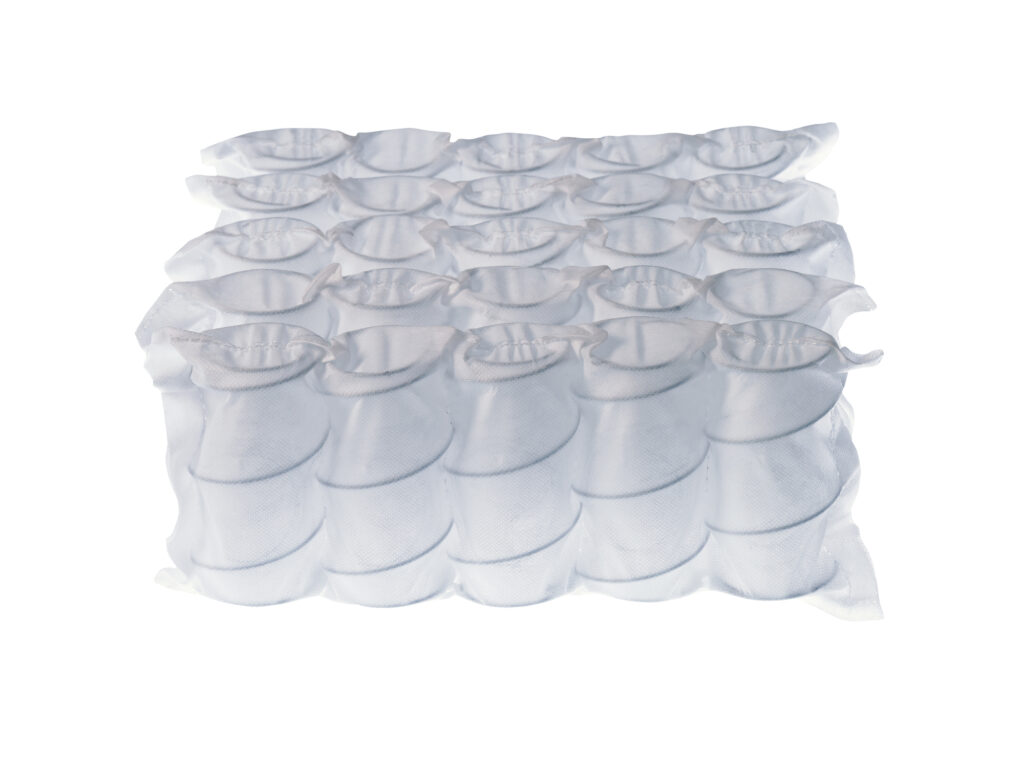
Are pocket spring mattresses good?
Pocket spring mattresses offer excellent support, breathability, and motion isolation,
and are suitable for back, side, and stomach sleepers. The pocket springs’
contouring ability helps keep the spine aligned and reduce bounce-back, while the
open coil structure promotes airflow. High-quality pocket springs maintain their
resilience over time, offering durable support without sagging and making them a
good investment in long-term comfort and health.
Can I use a pocket spring mattress on a straight slat base?
Absolutely! Pocket spring mattresses work well on slat bases that provide firm, even
support. Widely-spaced, spiral or flexible slat systems are less suitable, as they don’t
offer a solid enough surface to support the flexible pocket springs.
Which is better, a foam or a pocket spring mattress?
Both have merits: pocket springs are responsive and offer independent
conformability and breathability. Memory foam provides a warmer, softer ‘cradling’
feel with excellent pressure relief and motion isolation. Many modern mattresses are
hybrid models that combine both technologies for balanced support and comfort.
Does a pocket spring mattress cause back pain?
Quite the opposite! Quality pocket spring mattresses often have zoned support that can help prevent back pain by promoting proper spinal alignment, preventing your body from sagging into the bed, and providing stronger support where you need it most.
How many years does a pocket spring mattress last?
With proper care, a quality pocket spring mattress typically lasts 10 years. Higher-end models with durable materials can last even longer. Regular rotation, cleaning when required, and using a mattress protector (and optionally a mattress topper) can significantly extend the lifespan of any mattress.
What is the most comfortable spring mattress?
The most comfortable pocket spring mattress for you will depend on your specific sleep needs. If you want a quality NZ-made mattress with comfortable support and reduced partner disturbance, we have a wide range of pocket spring models available. If you suffer from back pain, look for a Swisstek mattress with zoned and layered spring technology to help maintain proper spine alignment. And if you’re after the best-of-the-best, check out our Sanctuary range, which combines premium materials and advanced temperature regulation with the Sensorzone support core for unbeatable comfort and support.
Should you flip a pocket spring mattress?
Most modern pocket spring mattresses have strong support materials at the base and softer comfort layers on top.
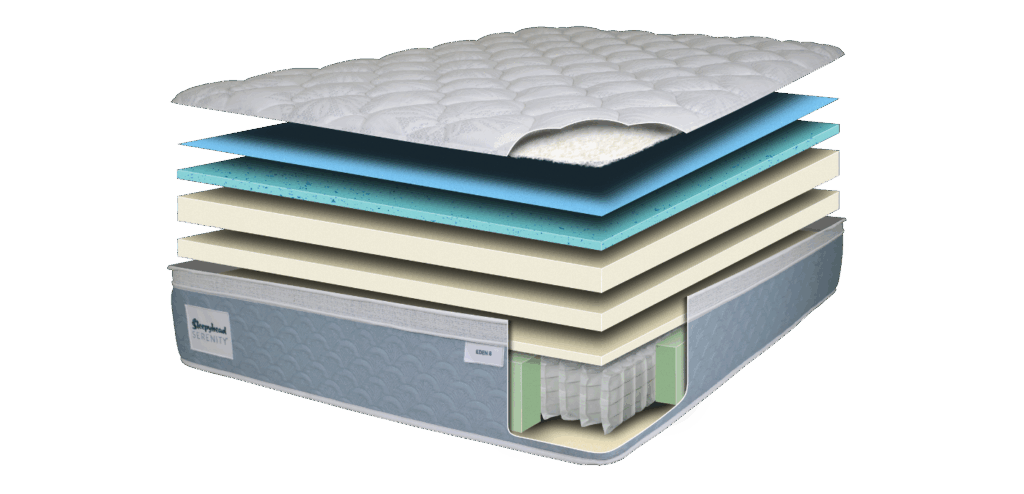
These are designed to be single-sided, and shouldn’t be flipped. Flipping could damage the mattress (and possibly also your back!) and leave you sleeping on the much less comfortable underside of the mattress. Instead, follow manufacturer instructions for turning new mattresses, then rotate your mattress head and foot every 3-6 months for even wear.
Can you sleep on a pocket spring mattress straight away?
Yes, you can sleep on a pocket spring mattress immediately! Remember to allow a short adjustment period (2-4 weeks) for the mattress to settle into shape and adapt to your body, and for your body to get comfortable on the new support system. Follow any specific manufacturer recommendations for initial use, including how often to turn the mattress.
Sleeping positions: which one’s right for you?
You spend a third of your life with your bed, which is more time than you’ll spend
with your significant other, your children, or your precious pets. It’s an important
relationship that should bring you joy, so why do you sometimes wake up feeling like
you’ve gone five rounds in the ring? Your bed probably doesn’t hate you, but your
sleep position might be sabotaging your rest.
So what are the most common (and best) sleeping positions? And how do you make
sure your sleep position works for you, not against you?
What is the best sleeping position?
The best sleeping position is the one that works for you! If you wake up well-rested
and free from aches and pains, keep doing what you’re doing. If you wake up
exhausted, with a sore neck, a stiff back, or no feeling in your fingers, it’s time for a
change. What’s best will depend on your needs. Do you snore? Have back pain?
Restless legs? Are you pregnant? Let’s break it down.
How do you sleep?
Lateral or Side Sleeping Position

Side sleeping positions are the most popular, and usually the most recommended, sleep positions. The fetal position is all about being compact: arms in, knees up, head down. But if you’re curled up too tightly, you might be restricting blood flow, compressing nerves, and making it difficult to breathe properly.
Make it work for you: Loosen up a little. Make like a log: stay on your side but keep your back long, your arms uncurled, your knees slightly bent, and use a pillow between them to stop your back from twisting as you sleep. Your spine will thank you.
Is the left or the right side better to sleep on?
Sleeping on the left side is generally recommended, as that position may help reduce reflux, drain toxins from the lymphatic system, improve digestion, and ease pressure on the heart. It’s especially recommended when you’re pregnant, as circulation is improved for both mother and baby. However, if you have left-side shoulder or hip pain, you’ll be more comfortable sleeping on your right side. Everyone’s needs are different!
Back or Supine Sleeping Position
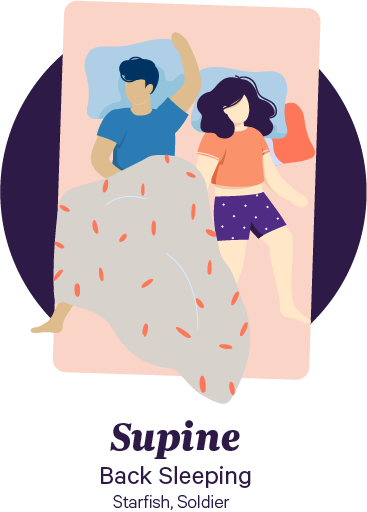
You’re flat on your back, either with arms and legs sprawled out making sheet angels or in a perfectly regimented line. Supine is great for your back, good for your neck, terrible if you snore. If your partner pointedly elbows you awake, this sleep position might be the culprit.
Make it work for you: A wedge or contour pillow will help elevate your head and open your airways. If your mattress is a bit old and dippy (perhaps your back is getting on as well?) try sleeping with a pillow under your lumbar spine to help maintain a neutral spine position.
Back sleeping, snoring and sleep apnoea
Sleeping on your back can cause the muscles in your throat, tongue and soft palate to collapse and restrict or block your airway. This can cause vibrations as air attempts to pass the blockage (snoring) or obstruct airways so significantly that breathing stops completely (obstructive sleep apnoea). Airway obstructions can be life-threatening so it’s important to mitigate the effects. Stop sleeping on your back! Side-sleeping is preferred (put a pillow behind you to stop rolling back), and use pillows (wedges work well!) to lift your shoulders, neck and head. If problems persist, speak to your healthcare provider.
Stomach or Prone Sleeping Position
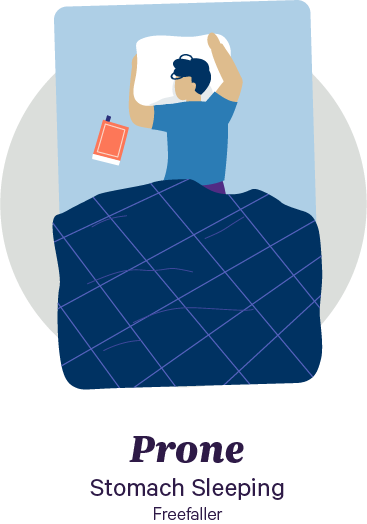
You’re a stomach sleeper, the rebel of the sleep world. The sleep experts tell you not to do it, but you know what you like and no expert will convince you otherwise. As a result, you sleep with your spine arched, head twisted to the side, and your arms in all sorts of interesting positions.
Make it work for you: If you can’t quit sleeping on your stomach, at least retire the high pillow. Try a low pillow – or no pillow at all – to ease neck strain. A pillow under your hips can also even out that lumbar arch to make your spine happier.
Is it possible to stomach sleep better?
Sleeping on your stomach causes neck and spine strain that can become chronic pain. If you can train yourself to combine stomach sleeping with back and side sleeping, you’ll give your stressed muscles and ligaments a chance to recover in a more neutral position. In addition to lowering your pillow and supporting your hips, stretch well during the day to loosen any kinks or knots.
Combination Sleeper
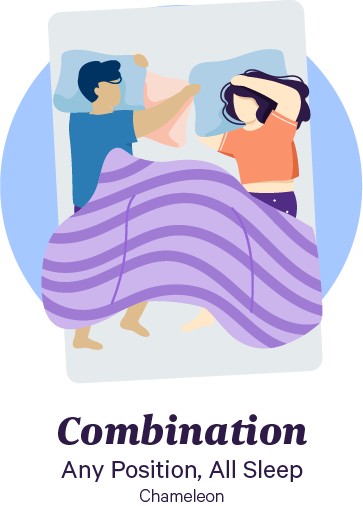
You’re not committed to any sleep position and you’re equally as comfortable on your stomach, back or side. Combination sleeping is common: adults move from three to 50 times throughout the night, making minor adjustments or completely changing sleep position.
Make it work for you: You may not have thought much about it, but your ability to sleep in all positions means you have a real sleep advantage! Contour pillows can give you a further helping hand here, allowing you to sleep with your head properly aligned regardless of which position you adopt.
Wildcard Sleeper: The Tempest
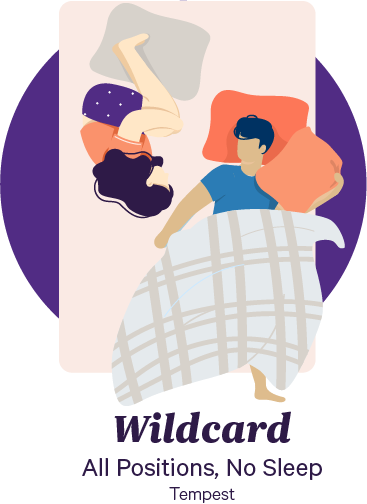
Forget minor adjustments: you spend most of your night on the move. You toss, turn, sprawl, curl and stretch. Your deep sleep is probably shot and your partner is being dragged down into your whirlpool of restlessness but you’re not being difficult: your body is crying out for comfort.
Make it work for you: Since you’re failing to sleep in all positions, your mattress might be a problem. Too soft? You sink in and wake up aching. Too firm? Pressure point pain and pins and needles keep you awake. Try a medium-firm mattress with good pressure relief, or experiment with a body pillow or a combination of knee, hip or lumbar pillows to position yourself properly. If you share a bed, prioritise mattresses with technologies that reduce motion transfer and partner disturbance so at least one of you can get some sleep.
Ideal sleeping position for pregnancy
Sleeping for two can be a real challenge. You’re uncomfortable, occasionally painful, waking frequently due to reflux or to answer the call of nature. Health experts recommend sleeping on your left side, which reduces pressure on major blood vessels and improves circulation to the heart, uterus, and baby. It can also improve kidney function, helping reduce swelling in your legs and feet. If you’re still finding it difficult to get comfortable, use a pregnancy pillow to support your belly and knees, preventing your hips and spine from twisting. Sleeping slightly elevated can also help alleviate reflux, but nothing will stop nature from calling once you’ve finally managed to get comfortable – sorry!
Best sleeping position for back pain
Unfortunately, sleep isn’t the miracle cure this time! The recommended position for most people suffering from back pain is on the less painful side, with knees slightly bent and a pillow between the legs to prevent the hips from twisting. Whatever gives you relief, invest in a quality, supportive mattress and use body pillows strategically. You want to ensure that your spine is as neutrally aligned as possible and that any particularly painful areas (wherever yours may be) get proper support and pressure relief.
The Real Test: How Do You Feel in the Morning?
Neck pain? Check your pillow. Side sleepers need loft, back sleepers need medium support, stomach sleepers can almost do without. You should replace your pillows every few years, so if yours is a bit elderly it might be time for a new one. There’s a whole new world of support out there waiting for you!
Hips or shoulders sore? A too-firm mattress will aggravate pressure points instead of relieving them. While you don’t need to switch to a super soft mattress, look for models that feature pressure-relieving foam on top of the support core (firm is still fine!) so you don’t feel like you’re sleeping on a plank of wood.
Back aching? The relationship between beds, sleep and spine health is well established. A mattress that’s too soft with insufficient support won’t be able to keep your back properly aligned. You can adjust your alignment with pillows, add a firmer topper to correct some of the sag (remember you still need some pressure relief) or invest in a mattress specifically designed to provide superior back support.
Sore head or throat from snoring, reflux or congestion? Use pillows or an adjustable bed base to elevate your head, or switch to side sleeping to open your airways. One caveat: make sure you’re not just lifting your head and sleeping with a bent neck, or you’ll have another set of problems to deal with!
Numb hands or fuzzy fingers? Sleeping on bent arms is common for side sleepers, and if you spend too long in that position you can really do a number on your nerves. Try sleeping on your back with pillows under your arms to keep them in a neutral position. If you suffer from recurring pins and needles andneed to sleep on your side, consider sleep splints that will stop your arms from curling back under you.
Finally, if you’re struggling with chronic sleep issues and pain, don’t suffer through it. If your mattress is 10+ years old, it’s time to head into a store and see what else is available – mattress technology has come a long way. And if making simple changes to your sleeping position and bed setup doesn’t help, then it’s time to talk to your healthcare provider.
Life’s too short to put up with bad sleep!
Get closer to nature, crafted with natural materials by New Zealand’s most trusted, to help you get a healthy night’s sleep. Designed and Made in New Zealand and crafted with the best nature has to offer.

